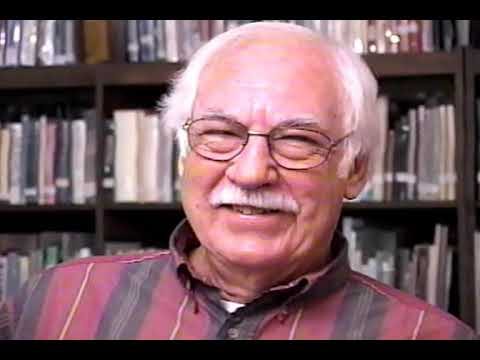“My Love for All Things Warm and Breathing” by William Kloefkorn from Cottonwood County. © Wildflower Press, 1980.
ORIGINAL TEXT AND AUDIO - 2016
George Frideric Handel completed the Messiah oratorio on this date in 1741. Librettist Charles Jennens had finished the text in July, and he handed it off to Handel with great expectations. He wrote to a friend, “I hope [Handel] will lay out his whole Genius & Skill upon it, that the Composition may excel all his former Compositions, as the Subject excels every other Subject.” Handel worked at a furious pace, doing nothing else but composing from morning to night, and completed the oratorio in only 24 days.
Messiah tells the story of Jesus’s birth, death, and resurrection. It was originally written for the Easter season, and it debuted in Dublin at a charity concert the following April. The event attracted 700 people; to accommodate such a crowd, gentlemen were asked to leave their swords at home, and ladies were requested to remove the hoops from their skirts. The Dublin News-Letter reported that Messiah “far surpass[ed] anything of that Nature which has been performed in this or any other Kingdom.”
It remained one of Handel’s favorite works for the rest of his life, and grew to become a beloved holiday favorite — but at Christmastime, rather than Easter. Even Mozart was reluctant to change anything about the oratorio when he supervised a new arrangement in 1789. “Handel knows better than any of us what will make an effect,” Mozart said. “When he chooses, he strikes like a thunderbolt.”
On this date in 1814, a lawyer named Francis Scott Key wrote his poem “Defense of Fort McHenry.” The fledgling United States was two years into its second war with Great Britain. Things were going all right for the Americans early in the war, because the British were distracted by their concurrent war with France. But when Napoleon was defeated in April 1814, the British turned their full attention on their former colony. Americans were shocked and appalled when the British marched into Washington, D.C., and burned the Capitol and the White House. “Every American heart is bursting with shame and indignation at the catastrophe,” one Baltimore resident said.
From Washington, the British moved on to Baltimore, intending to destroy as much of the major port city as possible. The city’s harbor was defended by Fort McHenry, and the British navy began firing on it on September 13. They attacked Baltimore throughout the day, and that night they sent more than 1,500 bombs, rockets, and cannon balls across the water at Fort McHenry. Francis Scott Key, a lawyer who had been sent to negotiate the release of an American prisoner, was on a British boat behind the lines for the duration of the battle. Suddenly, in the middle of the night, the British stopped firing. From their boat, Key and the other men had no idea whether the British had succeeded or given up and retreated, and they could no longer see the harbor now that the sky was dark. So they had to wait all night, until the sky was light enough to see which flag was flying over the fort. The sunrise revealed that the American flag still held its place. Key scribbled down some ideas for a poem, and later that day, after his release, he wrote the poem in a room at the Indian Queen Hotel. Within days it had circulated, and was being sung to the tune of a drinking song, “To Anacreon in Heaven.” It became a huge hit, but didn’t become our official national anthem until 1931.
The flag in question had been commissioned in 1813 by Major George Armistead, the commander of Fort McHenry, and it was sewn by Baltimore seamstress Mary Pickersgill, assisted by her 13-year-old daughter, two teenage nieces, and an indentured servant. They constructed the 30- by 42-foot flag by sewing together strips of English wool bunting that were 12 to 18 inches wide. Each of the 15 stars was two feet wide between the points, and the stripes were two feet wide as well. They laid the flag out on the floor of a local brewery to stitch it together.
The Star-Spangled Banner remained in the Armistead family for several generations before they donated it to the Smithsonian Institution. It was in pretty bad shape by the time the Smithsonian got it; the Armisteads had snipped away several bits of it to give away as souvenirs, and Louisa Armistead (George’s widow) cut out an entire star to give away. That star has never been tracked down, and that’s why visitors to the Smithsonian see only 14 stars rather than 15.




I wonder about the indentured servant. Who was she?